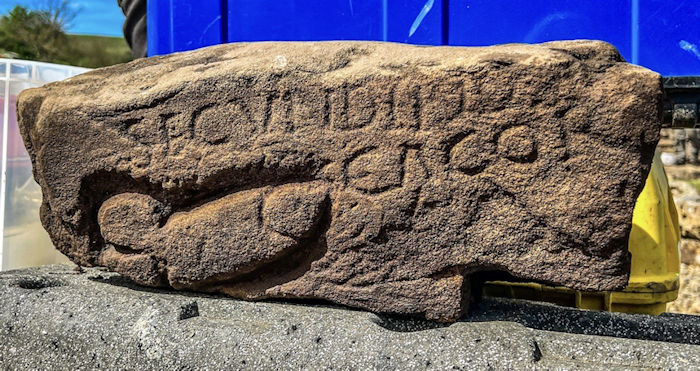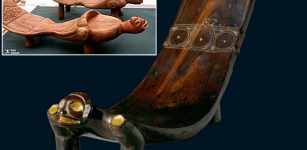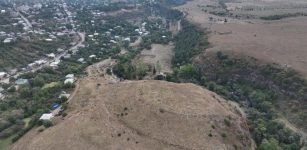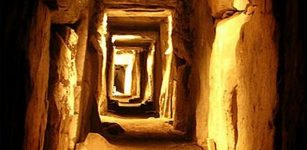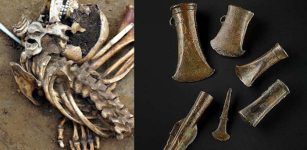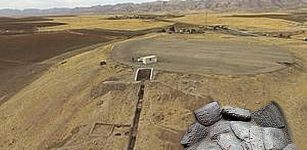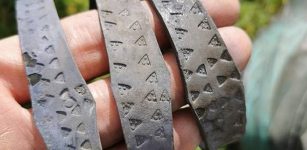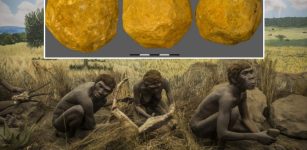Ancient Graffiti Unearthed At Roman Vindolanda Reveals What One Roman Thought Of Another
Jan Bartek - AncientPages.com - Nestled in the picturesque Northumberland countryside, Vindolanda with its fort and settlement is a treasure trove of everyday life during the Roman occupation of Britain and beyond.
The fort of Vindolanda, one of the earliest Roman garrisons, built by the Roman army in England, is one of Europe's most important Roman archeological sites. It guarded the Stanegate, the Roman road from the River Tyne to the Solway Firth, and was situated behind Hadrian’s Wall, near the modern village of Bardon Mill in Northumberland, England.
Credit: Vindolanda Trust
What makes this part of the Hadrian’s Wall World Heritage Site so exceptional, is that some of the nearly 2,000-year-old artifacts uncovered reveal human emotions and feelings. Perhaps the most famous example is the handwritten birthday invitation where one woman very politely requests that her “dearest sister” join her to celebrate her birthday.
The latest discovery made at Vindolanda gives us a fascinating window into the emotions of someone in the 3rd century, and this time they are not so polite.
Dylan Herbert, a retired Biochemist from South Wales made the discovery on 19th May, towards the end of his second week volunteering on the excavations. Dylan commented “I’d been removing a lot of rubble all week and to be honest this stone had been getting in my way, I was glad when I was told I could take it out of the trench. It looked from the back like all the others, a very ordinary stone, but when I turned it over, I was startled to see some clear letters. Only after we removed the mud did I realize the full extent of what I’d uncovered, and I was absolutely delighted”.
As well as the obvious explicit carved phallus, the face of the stone which measures 40cm wide by 15cm tall, is engraved with the words SECVNDINVS CACOR, an engraving which makes this graffiti a very personal insult. Specialists in Roman epigraphy, Drs Alexander Meyer, Alex Mullen, and Roger Tomlin, recognised it as a mangled version of Secundinus cacator: “Secundinus, the shitter” with the image adding to the force of the written insult.
Dr. Andrew Birley, Director of Excavations and CEO of the Vindolanda Trust commented in a press statemenent: “The recovery of an inscription, a direct message from the past, is always a great event on a Roman excavation, but this one really raised our eyebrows when we deciphered the message on the stone.
It’s author clearly had a big problem with Secundinus and was confident enough to announce their thoughts publicly on a stone. I have no doubt that Secundinus would have been less than amused to see this when he was wandering around the site over 1,700 years ago”.
Credit: Vindolanda Trust
The Roman phallus is often seen as a good luck charm or symbol of fertility, a positive symbol. However, in this case the author has cleverly taken its meaning and subverted it to their own aims. Each letter has been carefully carved, which would have taken a while, leaving little doubt to the depth of feeling held. This fabulous bit of social commentary from the ancient past will amuse visitors for many years to come.
It reminds us that while the Roman army could be extremely brutal, especially to the native population, they were not immune to hurling insults at each other. Centuries before printed papers or social media were available this would have been one of the best ways to get a lot of people noticing a point of view.
See also: More Archaeology News
Considering the extensive excavations and research at Vindolanda, spanning almost 100 years, it is unsurprising to note that the site has more phallus carvings than any other along the line of Hadrian’s Wall.
This new addition takes that tally up to 13, a number which is believed to be unlucky for some, but the Vindolanda archaeologists hope it is a great sign for the rest of the excavation season.
Written by Jan Bartek - AncientPages.com Staff Writer

